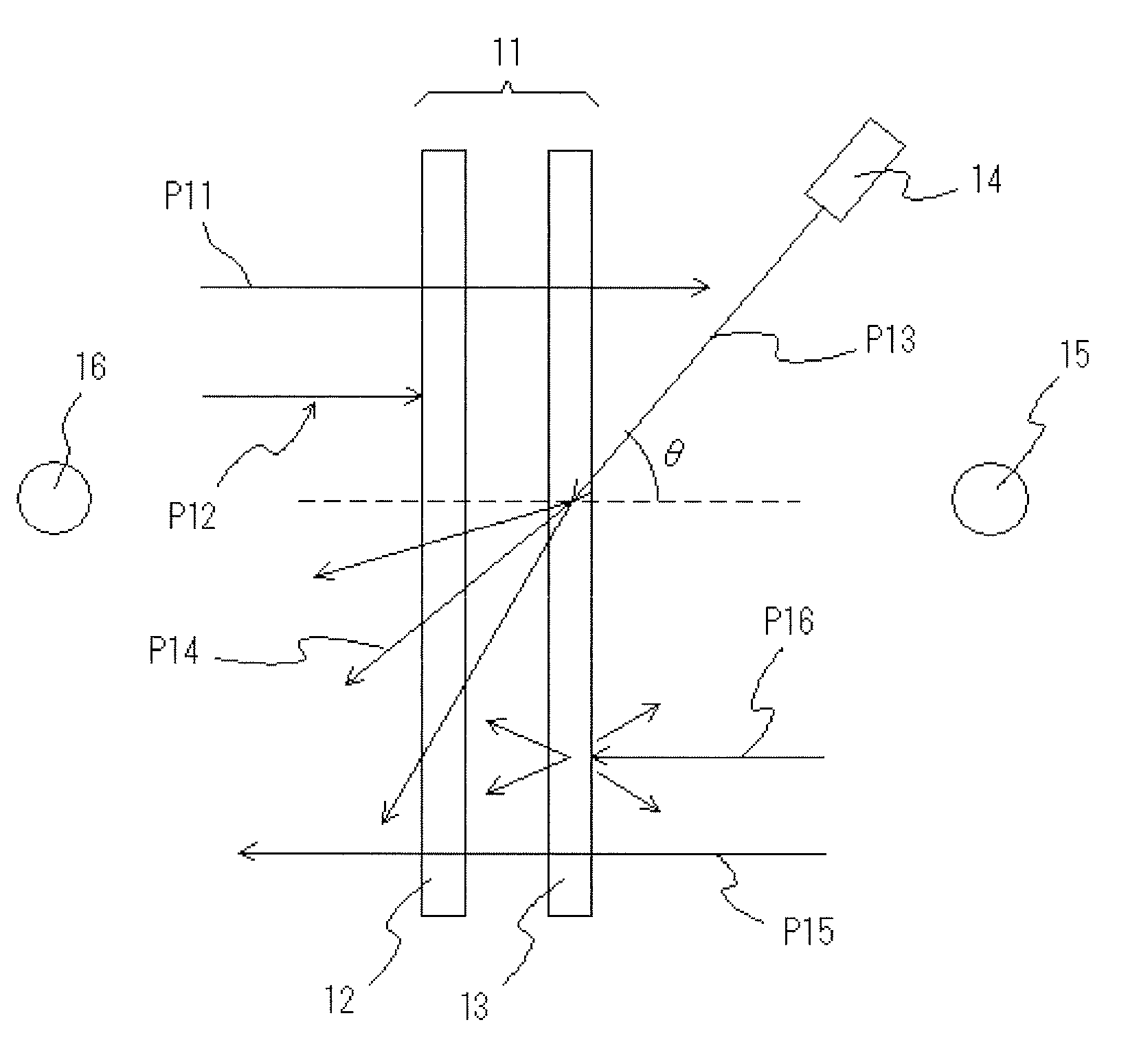Semitransparent diffusion-polarization laminate and usage therefor
a diffusion-polarization laminate and semi-transparent technology, applied in the direction of polarising elements, instruments, projectors, etc., can solve the problems of difficult to clearly display an image under bright natural light, failure to disclose the relation between the screen and an outside light (e.g., natural light) from the other side of the polarizer, etc., to achieve simple structure, improve front luminance, and improve image visibility
- Summary
- Abstract
- Description
- Claims
- Application Information
AI Technical Summary
Benefits of technology
Problems solved by technology
Method used
Image
Examples
example 1
[0196]The PEN resin (10 parts by weight) as a resin for a dispersed phase and the PC resin (90 parts by weight) as a resin for a continuous phase were melt-kneaded and extruded at a cylinder temperature of 280° C. by the biaxial extruder and cooled to give a pellet. The resulting pellet was press-molded at 270° C. and a pressure of 10 MPa for 3 minutes by the small pressing machine to give a press sheet having a thickness of 350 μm. The resulting sheet was cut to a width of 40 mm and a length of 70 mm to give a specimen. The specimen was pre-heated at a chuck distance of 50 mm at 150° C. for 5 minutes by the tensile tester provided with a thermostatic unit, stretched to 1.5 times at a tension speed of 250 mm / min., and then heat-treated at 165° C. for 3 minutes with the specimen held by the chuck. Thereafter, the specimen was rapidly cooled to a room temperature to give a stretched film. The dispersed phase in the film had a major-axis length of 1.5 μm, a minor-axis length of 0.5 μm,...
example 2
[0199]A stretched film and a polarization laminate were produced in the same manner as Example 1 except that a press sheet having a thickness of 400 μm was produced by press molding.
example 3
[0200]A stretched film and a polarization laminate were produced in the same manner as Example 1 except that a press sheet having a thickness of 550 μm was produced by press molding.
PUM
 Login to View More
Login to View More Abstract
Description
Claims
Application Information
 Login to View More
Login to View More - R&D
- Intellectual Property
- Life Sciences
- Materials
- Tech Scout
- Unparalleled Data Quality
- Higher Quality Content
- 60% Fewer Hallucinations
Browse by: Latest US Patents, China's latest patents, Technical Efficacy Thesaurus, Application Domain, Technology Topic, Popular Technical Reports.
© 2025 PatSnap. All rights reserved.Legal|Privacy policy|Modern Slavery Act Transparency Statement|Sitemap|About US| Contact US: help@patsnap.com



